Issue 14: Inspection of contractor’s work - Beware of field changes!
Figure 18: APS and curb ramps that were not installed as designed.
Figure 19: Another view of the same corner. Note shifting slopes and cross slopes on the ramps in addition to poor APS location.
Figure 20: Deaf-blind user stands with his hand on the original APS to feel the vibration in order to know when to begin to cross.
Figure 21: Orientation and mobility specialist explains the APS to two individuals who will be crossing there (two APS on same pole). One crossing is a few feet to the left of the photo; the other is approximately 20 feet to the right, straight ahead of individual standing with his arm on top of the APS.
Figure 22: When two APS are mounted on an existing signal pole, one is poorly located. The pushbutton for crosswalk B is near the crosswalk, but the pushbutton (and vibrotactile arrow) for crosswalk A is a long way from the crosswalk.
While design drawings showed level landings and APS beside the level landings and crosswalks, the finished construction did not match the plans. At the location shown in Figures 18 and 19, the contractor made some decisions in the field that affected the usability of the APS and the curb ramps.
The APS to cross the street that is on the right in Figure 18 is not located according to the plans and the arrow points to the curb ramp, rather than being aligned with the direction of travel on the crosswalk. The poor location is more easily seen in Figure 19, taken from across the street. A red circle highlights where the pedestrian signal pole was supposed to be installed.
By the time the designer saw the installation, however, and noted the lack of compliance with specifications and with ADA requirements, the inspector had signed off on the job. The contractor and inspector both need to understand APS installation and use before making decisions in the field about revisions to plans.

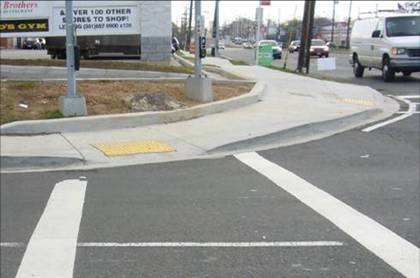
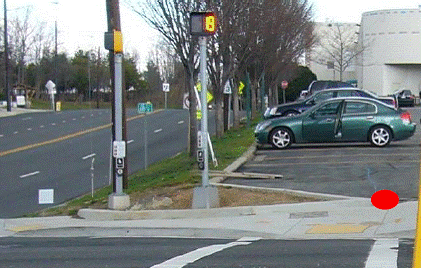
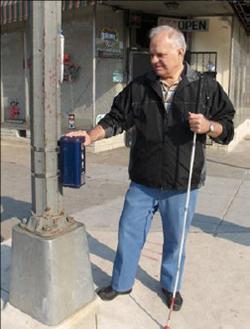
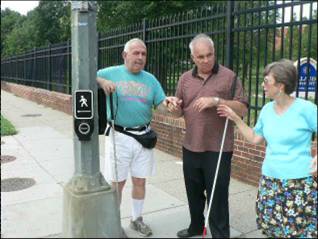
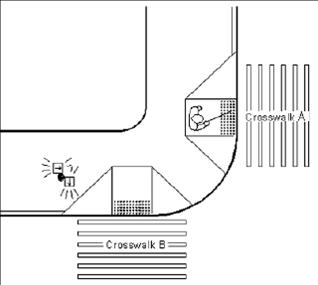
User Comments/Questions
Add Comment/Question